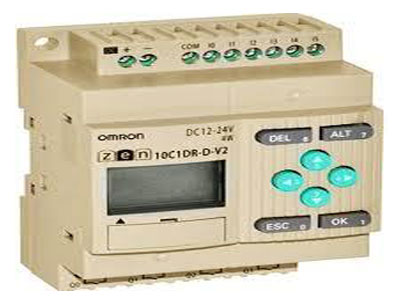How Do Plcs Integrate With Iot Devices?
Key Takeaway
PLCs integrate with IoT devices using gateway devices, which act as bridges between the PLCs and the IoT network. These gateways convert data from the PLC into a format that IoT systems can understand. Once connected, the PLCs can send real-time data to IoT platforms for monitoring and analysis. This integration allows for better decision-making, predictive maintenance, and improved efficiency in industrial processes. Using protocols like MQTT, OPC UA, or Modbus TCP/IP, the data is securely transmitted, enabling seamless communication and enhanced automation capabilities.
Introduction to IoT and PLC Integration
The integration of Programmable Logic Controllers (PLCs) with Internet of Things (IoT) devices is revolutionizing industrial automation. PLCs, traditionally used for controlling machinery and processes, are now being connected to IoT networks, enabling real-time data collection, monitoring, and control. This fusion enhances efficiency, predictive maintenance, and decision-making processes. For newly joined engineers, understanding how PLCs integrate with IoT devices is crucial for modern industrial operations.

Communication Protocols for PLC-IoT Integration
Effective communication is crucial for PLC-IoT integration. Key protocols include MQTT, OPC UA, and Modbus TCP/IP:
MQTT (Message Queuing Telemetry Transport): Lightweight and efficient, ideal for connecting PLCs to cloud-based IoT platforms. Suitable for real-time data monitoring and control due to its low bandwidth usage and fast response times.
OPC UA (Open Platform Communications Unified Architecture): Provides a robust framework for secure and reliable data exchange. Supports complex data structures and ensures interoperability across different systems, essential for industrial automation.
Modbus TCP/IP: Widely used for its simplicity and reliability. Facilitates easy integration with existing systems, providing straightforward data communication between PLCs and IoT devices.
Understanding these protocols helps engineers set up and maintain seamless PLC-IoT communication, ensuring reliable, efficient, and secure data exchange in industrial systems.
Setting Up PLCs with IoT Devices
To set up PLCs with IoT devices, follow these steps:
Check Compatibility: Ensure the PLC and IoT devices support the required communication protocols (e.g., MQTT, OPC UA, Modbus TCP/IP).
Configure Network Settings: Set IP addresses, subnet masks, and gateways for both the PLC and IoT devices to enable data exchange.
Install Software: Install and configure software on both devices for data collection, transmission, and analysis.
Test the Setup: Thoroughly test to ensure accurate data transmission and reception.
Follow best practices and manufacturer guidelines for a smooth integration, ensuring reliable and efficient operation.
Benefits of Integrating PLCs with IoT
Integrating PLCs with IoT offers several key benefits:
Enhanced Data Visibility: Real-time data collection improves monitoring and control of industrial processes.
Predictive Maintenance: IoT sensor data helps identify and address issues before they cause equipment failure, reducing downtime and maintenance costs.
Better Decision-Making: Access to comprehensive data enables informed decisions, enhancing operational efficiency and productivity.
Overall, PLC-IoT integration makes industrial operations smarter, more efficient, and responsive, providing a competitive edge in the industrial landscape.
Case Studies of PLC-IoT Integration
Real-world case studies highlight the effectiveness of integrating PLCs with IoT. For example, a manufacturing plant integrated PLCs with IoT sensors to enable real-time monitoring of production lines. This setup allowed for immediate detection of anomalies, which reduced downtime by 20%. The real-time data collection and analysis provided insights that helped optimize the production process, improving overall efficiency.
In the utilities sector, PLC-IoT integration significantly improved the efficiency of water treatment plants. By continuously monitoring water quality and equipment performance with IoT sensors, these plants maintained high standards while reducing operational costs. The integration allowed for proactive maintenance and timely interventions, ensuring consistent water quality and reliable operations.
These case studies demonstrate the tangible benefits of PLC-IoT integration, showcasing its potential to revolutionize various industries. Enhanced monitoring, reduced downtime, improved efficiency, and cost savings are just a few of the advantages that come with integrating PLCs with IoT. These examples illustrate how industries can leverage this integration to drive productivity and maintain competitive edges.
Conclusion
The future of PLCs in the IoT era looks promising. As industrial processes become increasingly digitized, the integration of PLCs with IoT devices will play a pivotal role in driving efficiency and innovation. Engineers entering the field must stay abreast of the latest developments in PLC-IoT integration to remain competitive. The continuous evolution of communication protocols and IoT technologies will further enhance the capabilities of PLCs, making them even more integral to industrial automation. Embracing this integration will not only improve current operations but also pave the way for a more connected and intelligent industrial future.
